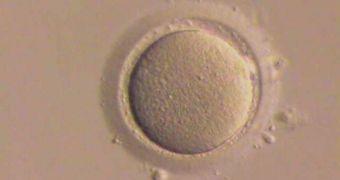Researchers from the United Kingdom say that they were able to develop a new medical tool, that could be used by doctors to provide patients with the most relevant and accurate assessments on the potential results that applying in-vitro fertilization (IVF) could have.
This type of artificial insemination is known to have some risks, and to work only a small percentage of the time. What scientists wanted to do was give people the chance to discover what their fate would be if they decided to go ahead with the procedure.
The group, based at the University of Bristol, collaborated with colleagues from the University of Glasgow for the investigation. The end result is a tool similar to a calculator, which determines IVF treatment success rates and possibilities.
In order to develop the new instrument, researchers had to cover more the evolution and results of more than 144,000 IVF cycles. But all this hard work paid off, the calculator's creators say, when they learned that the system has a 99 percent accuracy rate.
All the IVF cycles that were analyzed during the study took place between 2003 and 2007. Data on their success were collected from the Human Fertilization and Embryology Authority (HFEA), which is the body that oversees IVF-related activities in the UK.
“Essentially, these findings indicate that treatment-specific factors can be used to provide infertile couples with a very accurate assessment of their chance of a successful outcome following IVF,” explains Scott Nelson.
“It provides critical information on the likely outcome for couples deciding whether to undergo IVF – up until now estimates of success have not been reliable,” adds the expert, who is a professor at the University of Glasgow (UG).
“The result of this study is a tool which can be used to make incredibly accurate predictions. As is commonly known, not every attempt at IVF is successful,” adds Nelson, the Muirhead Chair of Reproductive and Maternal Medicine at UG.
He explains that only about a third of women under 35 years old experience successful IVF procedures in the United States and the UL. That percentage drops to only 5 to 10 per cent in the case of women who over the age of 40.
But scientists say that there are many more factors that can contribute to the success or failure of IVF, except a woman's age. The calculator takes all of them into account, Nelson explains.
“This study assessed the extent to which the characteristics of infertile couples and the treatment they receive can be used to predict live birth after IVF. It looked at a large number of different factors which can influence the outcome of an IVF cycle,” adds Debbie Lawlor.
“The IVF calculator is not only of use to the couples themselves but also to health care funders like the NHS to ensure appropriate use of resources,” adds Lawlor, who is a professor of epidemiology at the University of Bristol.
Details of the new model appear in paper entitled “Predicting Live Birth, Preterm, and Low–Birth-Weight Infants Born from In Vitro Fertilisation: A Prospective Study of 144,018 Treatment Cycles,” published in the latest issue of the open-access journal PLoS Medicine.

 14 DAY TRIAL //
14 DAY TRIAL //